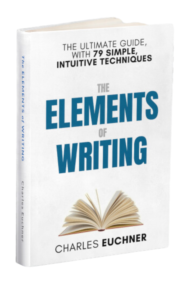 Stories are collections of hundreds of moments. In the best stories, every moment plays a critical role everything that happens, both before and after. By studying specific story moments, we can understand the whole arc of actions that make a story feel inevitable, satisfying, and complete.
Stories are collections of hundreds of moments. In the best stories, every moment plays a critical role everything that happens, both before and after. By studying specific story moments, we can understand the whole arc of actions that make a story feel inevitable, satisfying, and complete.
The Turning Point in Twelve Angry Men
It’s hard to imagine more drama coming out of a small room with 12 impatient, imperfect men than the 1957 directorial debut of Sidney Lumet.
Twelve Angry Men depicts jury deliberations in a capital murder case in New York City in the 1950s. Based on a play, the movie violates all kinds of storytelling rules. It’s about a bunch of people sitting around a table about a case for which no one has a stake. But it is surprisingly tense as the vote to convict the defendant goes from 11-1, moment by moment, till it’s 1-11.
The big takeaway, of course, is the power of one lone man–Juror No. 8, played by Henry Fonda–to stand up against the crowd for his principles. He does so by asking questions and showing empathy for the accused. Sh=lowly, the rest of the jurors become skeptical of the evidence against the Purto Rico kid charged with murder.
In a story fell of turning points, the one that also gets me comes when Juror 10 erupts against the nine jurors who have decided to acquit. Watch it here:
The scene starts with rail falling outside, always a harbinger of gloom and confinement.
Juror No. 1o expressed his worst prejudices as he lashes out against the others. He is a deep well of prejudice and resentment. “Look, you know how these people lie,” he says. “It’s born in them. They don’t know what the truth is. They don’t need any real good reason to kill someone. No, sir.”
With every line, he is confirming the deep doubts about the case.
The longer his harangue, the more he loses–and angers=–the others. One by one the stand and look away. They are so disgusted that they won’t even look at him, much less answer him.
Watch. It’s a sight to behold.
All the previous moiments in the story led to this moment. It’s the perfect capstone for a case that began in certainty and has unraveled completely. Now, only three angry men–each one deeply troubled–wants to convict the defendant. They’re all getting desperate.
Had the screenwriter gotten the other jurors to parry his rant, the scene would have been ruined. Instead, they stage a silent protest against him. They are in a completely differentnplace now.
After six of the jurors turn away, No. 10 falls apart. “What’s going on here?” he protests. After the eighth turns away, he says: “Listen to me: They’re no good.” Another stands. “What’s happening in here?” he says. Now only two other jurors remain at the table as he speaks.
“Listen to me,” he said.
“I have,” Henry Fonda says. “Now sit down and don’t open your mouth again.”
He stammers for a moment and then crumples into a seat.
With this harangue, it’s only a matter of time for the whole jury to join in finding the defendant not guilty.


